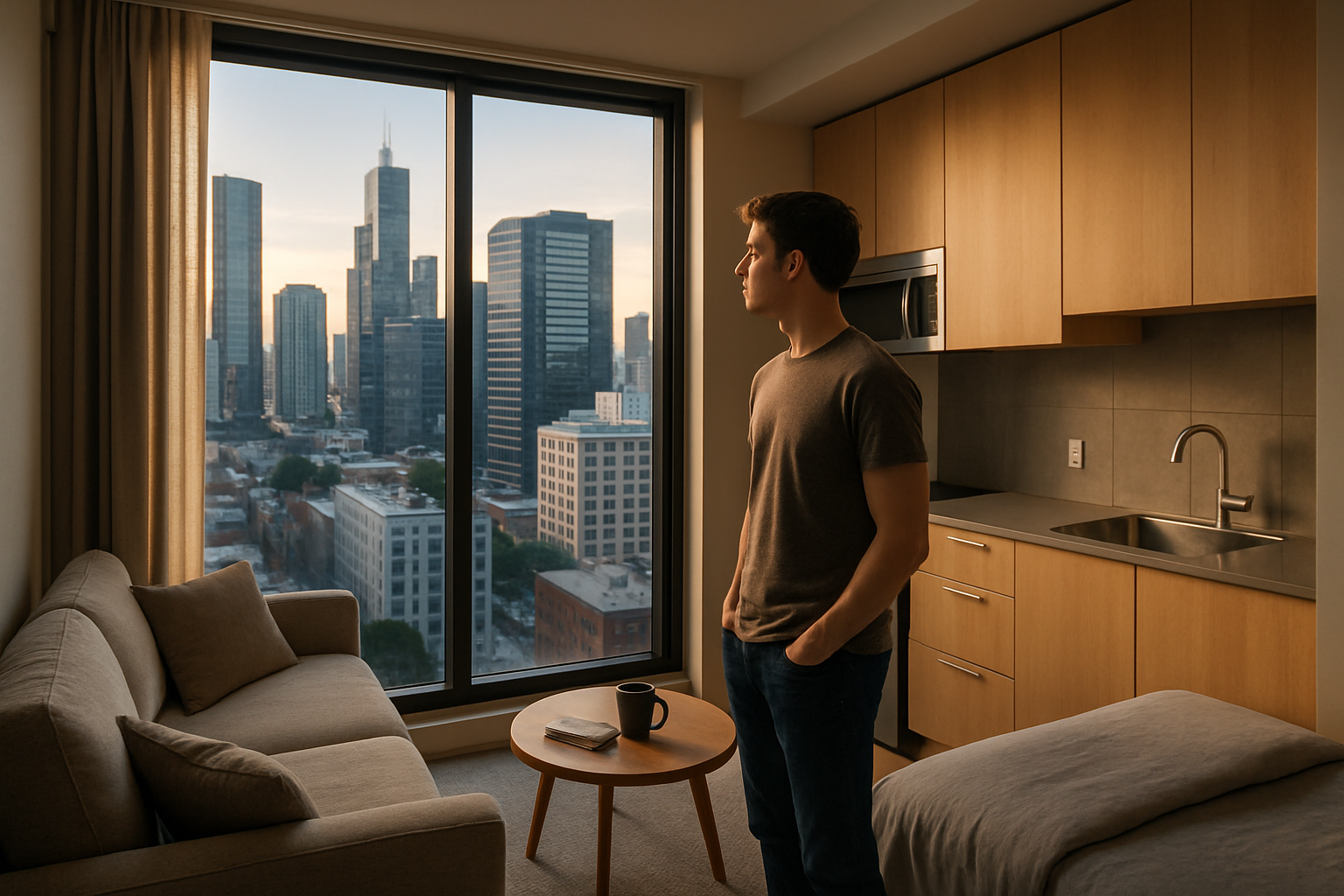Micro-Apartments: The Next Big Thing in Urban Real Estate
The concept of micro-apartments is gaining traction in major cities worldwide, reshaping the urban housing landscape. These compact living spaces, typically under 400 square feet, are becoming increasingly popular among young professionals and city dwellers seeking affordable housing options in prime locations. With urban populations growing and housing costs soaring, micro-apartments offer a innovative solution to the pressing challenges of urban living.

Economic Drivers Behind the Trend
The surge in micro-apartment developments is largely driven by economic factors. In many major cities, housing costs have outpaced wage growth, making traditional apartments increasingly unaffordable for young professionals and entry-level workers. Micro-apartments offer a more budget-friendly alternative, allowing residents to live in desirable urban locations at a fraction of the cost of larger units. This affordability factor has made micro-apartments particularly attractive to millennials and Gen Z individuals who prioritize location and experiences over living space.
Design Innovations in Micro-Living
Architects and designers are pushing the boundaries of creativity to make micro-apartments not just livable, but desirable. Many units incorporate multi-functional furniture, such as beds that transform into desks or dining tables that fold into walls. Vertical space is maximized through loft-style sleeping areas or high ceilings with built-in storage. Some developers are also integrating smart home technology to enhance the living experience, with features like voice-controlled lighting and temperature systems that optimize the use of limited space.
Impact on Urban Development and Zoning
The rise of micro-apartments is challenging traditional zoning laws and building codes in many cities. Some municipalities have had to revise their minimum square footage requirements to accommodate these smaller units. This shift has sparked debates about housing standards and quality of life. Proponents argue that micro-apartments increase housing density and affordability in urban cores, while critics raise concerns about overcrowding and potential negative impacts on neighborhood character.
Investment Potential and Market Outlook
From an investment perspective, micro-apartments present an intriguing opportunity. The higher density of units per building can potentially lead to greater rental income per square foot compared to traditional apartments. Additionally, the target demographic for micro-apartments – young, mobile professionals – often represents a stable tenant base with reliable rental income. However, investors should be aware of potential risks, such as changing regulations or shifts in housing preferences that could impact long-term demand.
Challenges and Criticisms
Despite their growing popularity, micro-apartments face several challenges. Critics argue that these units may lead to a lower quality of life, with concerns about mental health impacts from living in such small spaces. There are also worries about the long-term sustainability of micro-living, particularly for families or as residents age. Some cities have seen pushback from community groups concerned about the impact of high-density micro-apartment developments on neighborhood infrastructure and services.
The Future of Micro-Apartments
As urban populations continue to grow and housing affordability remains a pressing issue, micro-apartments are likely to play an increasingly significant role in the real estate market. Future developments may see a blend of micro-units with more traditional apartment sizes within the same building, offering a range of options for different lifestyles and budgets. Additionally, the concept of micro-living may expand beyond residential use, with potential applications in student housing, co-living spaces, or even short-term rental markets.
In conclusion, micro-apartments represent a significant shift in urban housing trends, offering a solution to the challenges of affordability and space constraints in major cities. While not without controversy, these compact living spaces are reshaping the real estate landscape and forcing a reconsideration of what constitutes desirable urban living. As the concept continues to evolve, micro-apartments may well become a standard feature of city life, reflecting changing attitudes towards space, affordability, and urban lifestyles.





